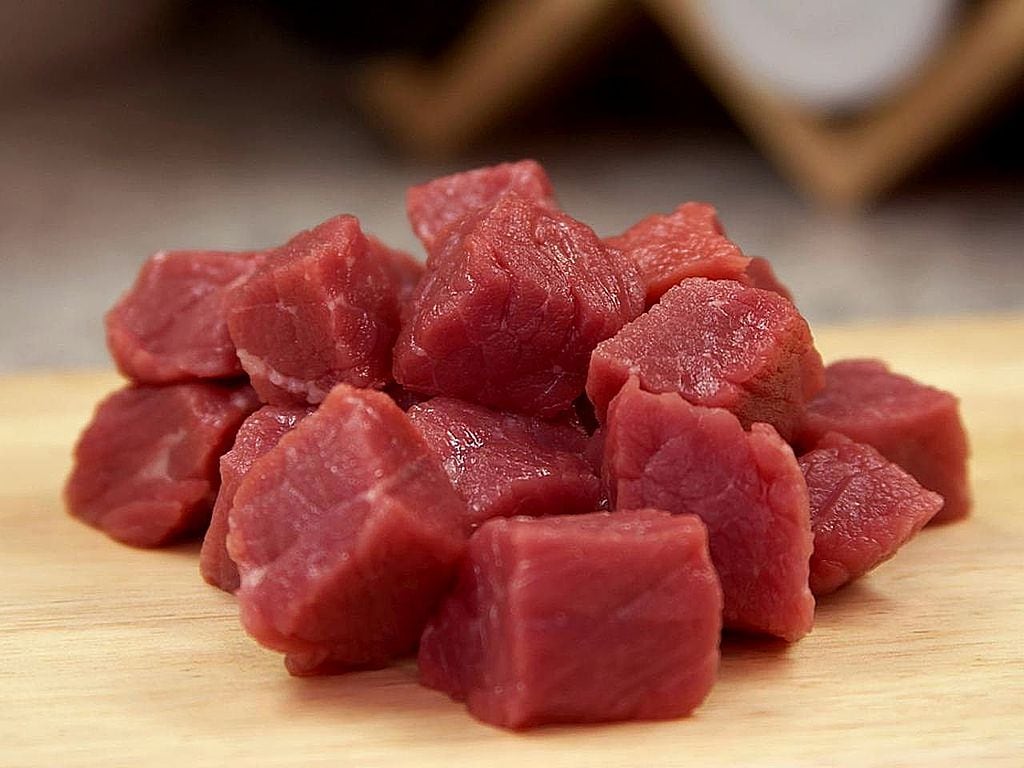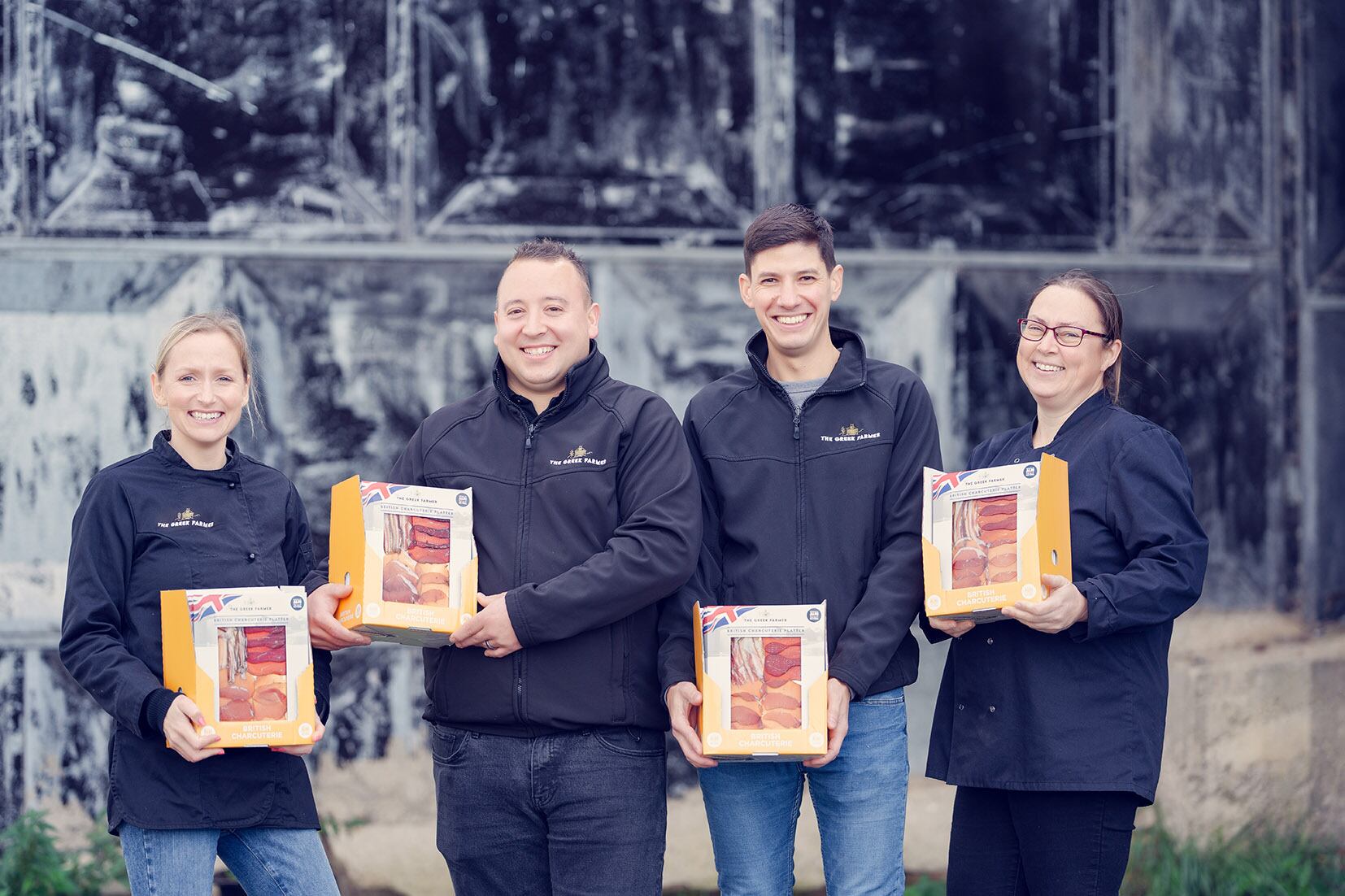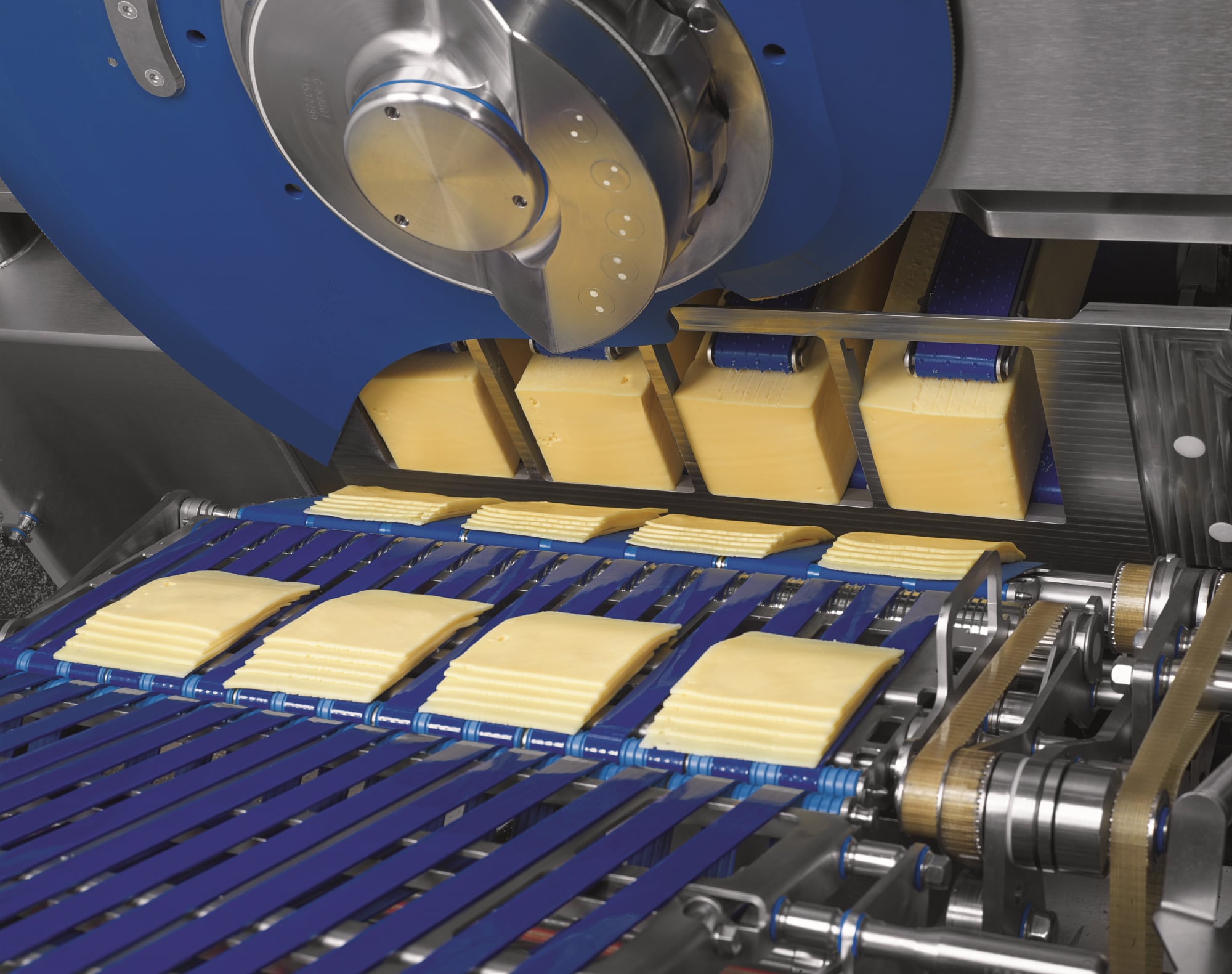The integrated approach
At Interfood, the focus has been on full line solutions and the benefits of an integrated approach to processors’ slicing requirements.
As Tom Foran – divisional manager of slicing for Interfood – explained, one of the most important factors in a successful line solution is the ability and ease for each component and module on the line to communicate with the others.
“This is a fundamental consideration in the development of automated slicing lines to ensure maximum efficiency,” he continued. “An example of this is the Weber/Textor full retail bacon line solution.

“With the proven Textor TS700/750 slicers at its heart, a full slicing line solution can encompass pressing, slicing and packaging right through to end-of line inspection and final case/crate packing, offering an option ideally suited to high-speed retail bacon production.”
The Weber/Textor Power Control System provides complete line integration, working in tandem with ‘Weber One Control’ to give line operators the ability to view performance, interrogate and control individual line modules from any touchscreen on the line.
Of course, the success of any slicing operation comes down to its components. In this example, Textor (and parent company Weber) operate an in-house blade manufacturing and technology department.
By developing their own blades, they can ensure that their machines have the right tools for the job to meet the needs of specific applications, from all types of bacon – including wet cure and premium dry – in a range of portion presentations.
“It’s about optimising efficiency and control and that is best achieved through ensuring that the different components in the line communicate effectively,” Foran added. “This enables optimisation of product flow and performance which ultimately contributes significantly to a profitable operation. Of course, you also need the best available base components to build the line for which Interfood is well known.”
Ultrasonic slicing
While the world of meat processing sees the line of share of innovation when it comes to developments in slicing and cutting technology, we mustn’t forget that the dairy sector is also a major beneficiary of the advancements. But unlike meat, cheese cutting often requires an extra level of finesse not required in the cutting of beef and poultry.
Cheese is traditionally hard to cut in manufacturing – cutting with a knife can result in breakage and even the drag of the knife can cause damage. The solution put forward by food machinery manufacturer Elliptical Design is to use ultrasonic technology when cutting.
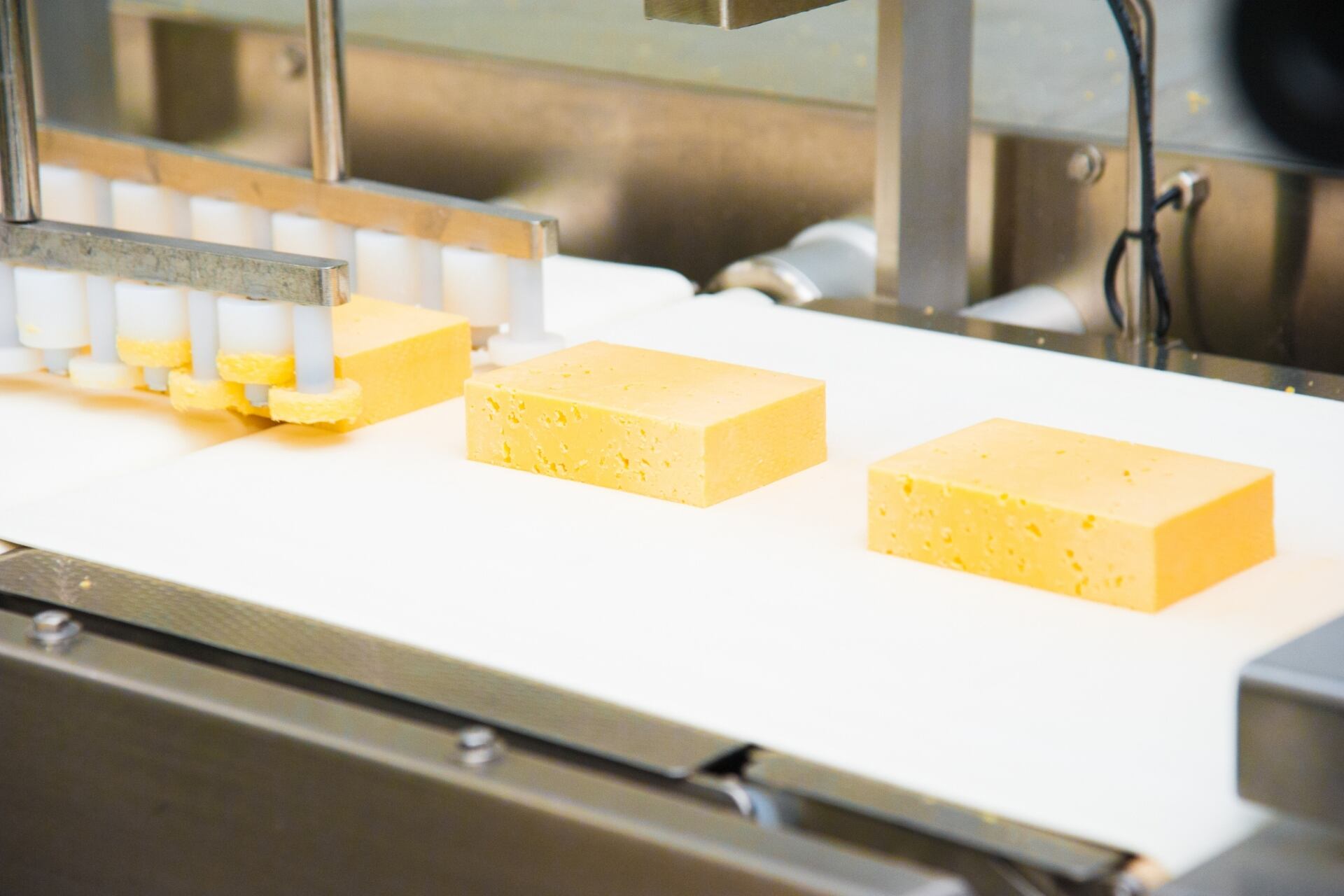
Ultrasonic uses energy from microscopic vibrations of a blade to pass easily through the material and offers a more effective solution for cutting cheese and other food products. When paired with automation, ultrasonic technology can deliver precise and accurate cutting for cheese manufacturers while eliminating wastage from damage and also improve aesthetics.
To support the implementation of ultrasonic cutting in its work with an unnamed cheese maker, Elliptical Design bought industrial robots into the process using machinery from TM Robotics. For this system, TM Robotics supplied the TV1000H 6-axis industrial robot.
Within this process, the robot picks up a ten-kilogram piece of cheese and moves it onto a weigh station and then a cutting station. There, it is cut in half using precise and accurate ultrasonic technology.
While elliptical Design said the collaboration yielded great results, fine tuning the robots’ vision system was a challenge. It all ties back into the idea of a fully integrated cutting line – information from one part of the line is passed along the rest of the production process to produced greater accuracy and prevent wastage.
“Shibaura Machine robots are generally easy to integrate with vision systems,” explained Nigel Smith, managing director of TM Robotics. “The challenge here was to ensure that the robot was picking up cheese in the right place and being able to put it down as accurately as needed — there’s a very slim margin for error in plastic tote placing.
“When the cheese is placed on the conveyor its actually still slightly soft. Rather than a round shape, it has a slightly flat side. Using our direct partnership with Shibaura Machine, the team’s engineers found the right algorithm in the vision programme to ensure the robot could identify non-uniform shapes and pick the cheese accurately.”
Space at a premium
One of the biggest trends experienced in all food and drink factories is the premium of space and this remains true for cutting a slicing production lines. In an ideal world a manufacturer can expand production by purchasing or building more space to put machines in, but for most producers this option is far too cost prohibitive.
Advertisement
Intelligent portion cutter with powerful product in-feed
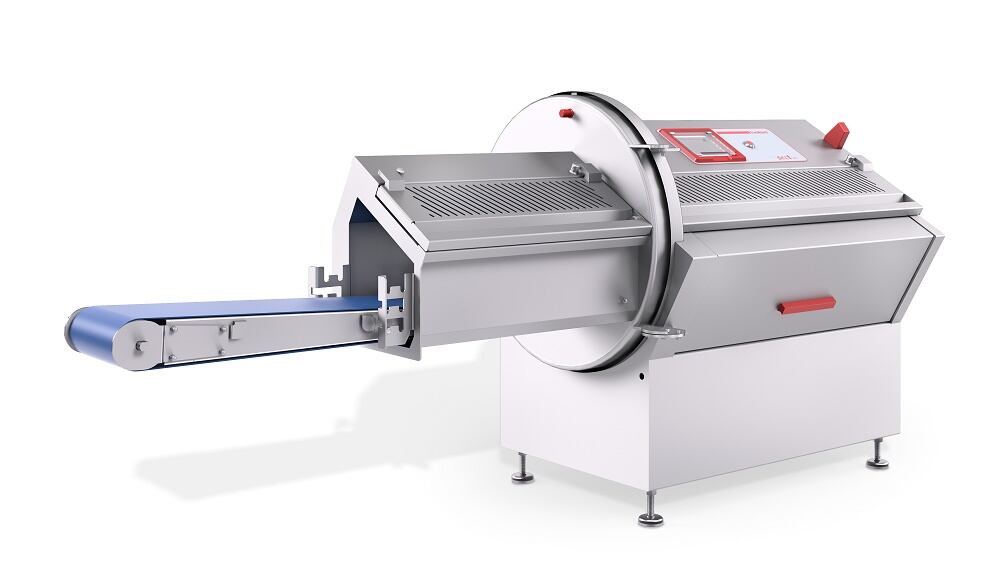
The holac portion cutting machines combines the advantages of a continuous feed slicer with a conventional gripper system. The Sect 230 TC for example is a highly flexible portion cutting machine. With its servo-controlled product feed and smart control system, it is possible to portion the product into groups with the consistently identical or at choice varying slice thickness. First-cut control and batching options are other functions that guarantee and optimise yield. The integrated discharge conveyor enables simple and swift product handling after slicing.
holac has developed specific cutting tools for slicing bacon into consistent slices with optimum yield. You can find the slicer in SME as well as in the industry. Manufactures are looking for machines with easy handling and cleaning systems. The slicers can be quickly and easily converted to other products in order to be variable within the production processes. Some slicers are integrated within machine lines for ease of loading typically into thermoformers.
As a result, manufacturers have to do with what space they already have and are now looking for machines that offer a small footprint coupled with high throughput and low maintenance, according to Provisur Technologies.
The latest addition to its portfolio, the Formax Slicer SX330, has been touted as a flexible and highly configurable option for manufacturers short on space that is both user-friendly and provide options for further expansion.
“In addition, at 330 x 160 mm, it has the largest cutting throat in its class,” Provisur continued. “With a cutting blade speed of 1000 or 1500 revolutions/minute, the system ensures top performance and perfectly complements the Provisur Slicer product range for an easy and professional changeover to automated food processing.
“The SX330 covers a wide range of applications, from simple slicing systems without scales to more complex slicing lines with up to two scales. It offers smooth, easy changes of components to process different products – the product feed, shear edge and gripper are already prepared for different types of cheese, deli meats, sausage and fresh meat. Due to the open and hygienic design, the SX330 is also easily accessible for cleaning and maintenance.”
Adapting on the fly
With manufacturers struggling to find skilled workers to operate their factories, concessions need to be made in order to make running a production line as easy and less labour intensive as possible – after all, having a high class piece of kit that requires multiple people to operate just isn’t possible if those people aren’t even in the room.
To this end, machinery providers have worked to remove the need for a large team working on a specific part of the line through automation technologies and innovations in design geared at reducing change-over times.
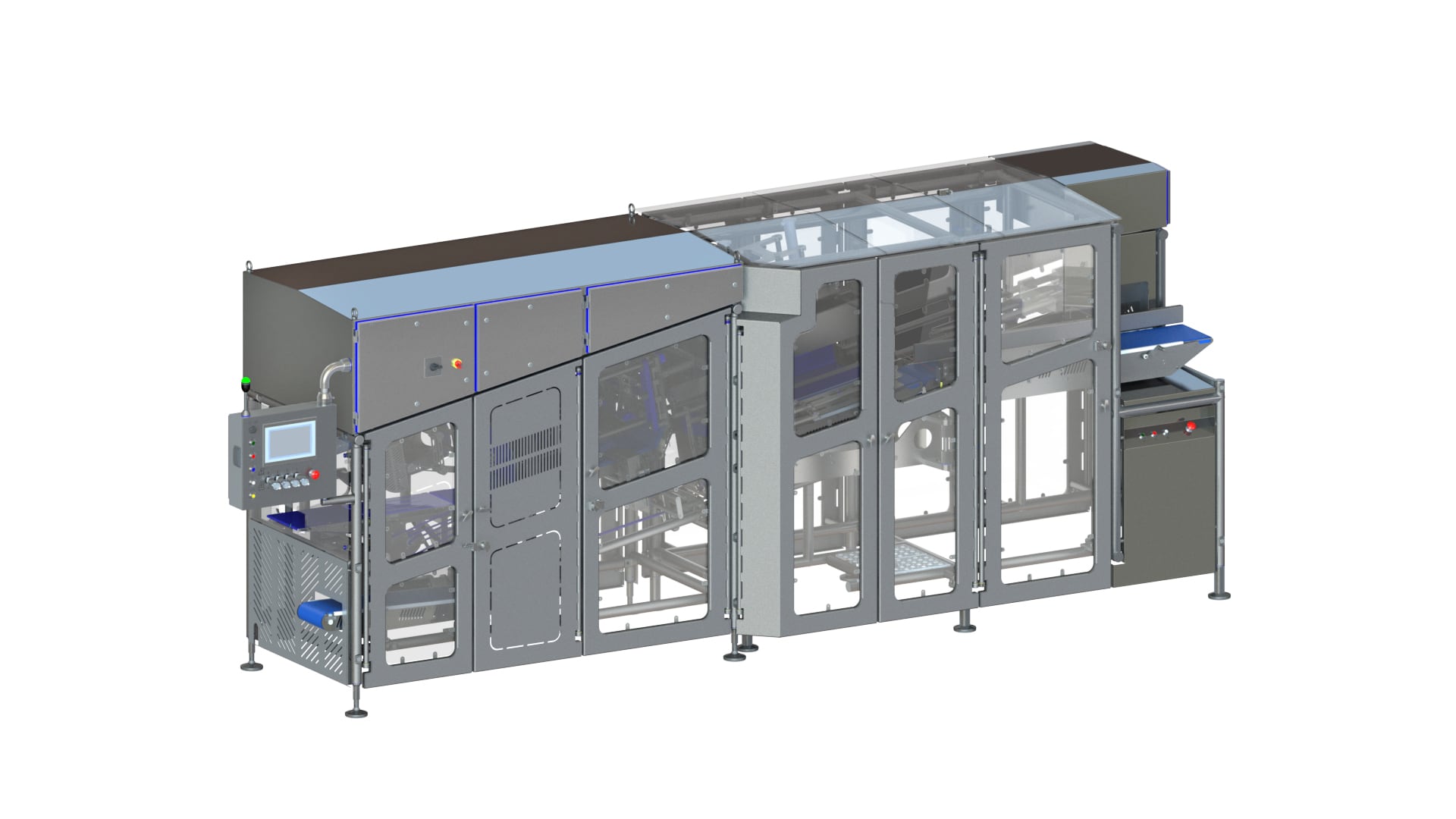
Thurne-Middleby’s new Portion X meat portioner uses new product conditioning and scanning technology to ensure consistent handling of variable product. Its patent pending ‘multi-dimensional active forming technology’ can adapt to primal cuts of variable size. Thus eliminating the need for dedicated forming moulds for each. Only a small number of change parts is needed to handle a variety of primals within a size range, with fewer changeovers required.
The Portion X meat portioner can be integrated into existing lines, where processors benefit from a reduction in downstream manual handling. The steaks and shingled groups produced are ready for packing with high on-weight rates, eliminating the need for manual collation and styling, and minimising rework required to achieve target pack weights.
“PortionX was designed to increase production capacity with the same number or fewer operatives,” explained project manager Adrian Neave. “Additional benefits of the reduced requirement in manual handling could be a more compact overall line footprint and improved shelf life.”



